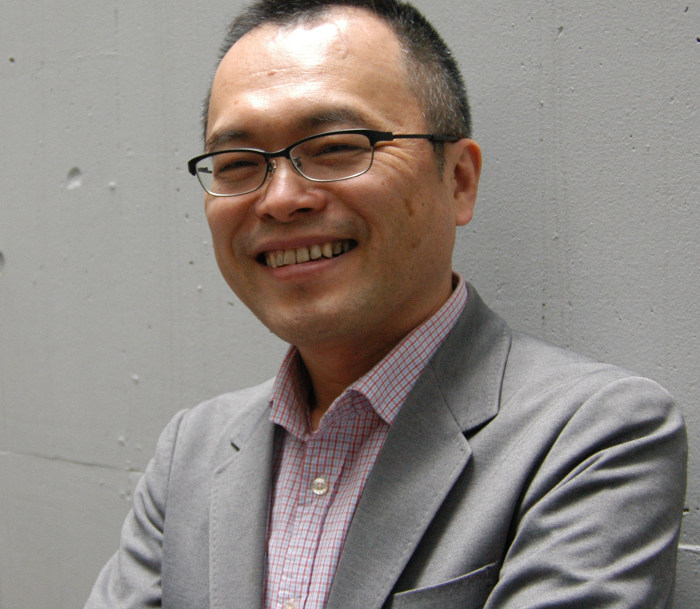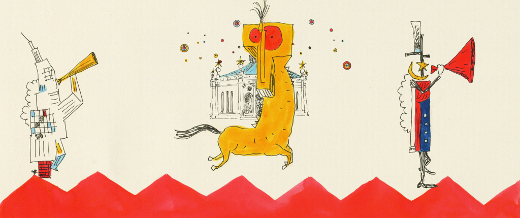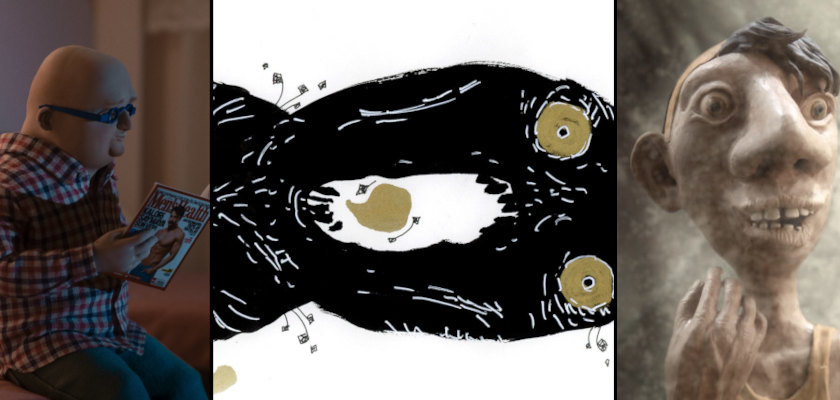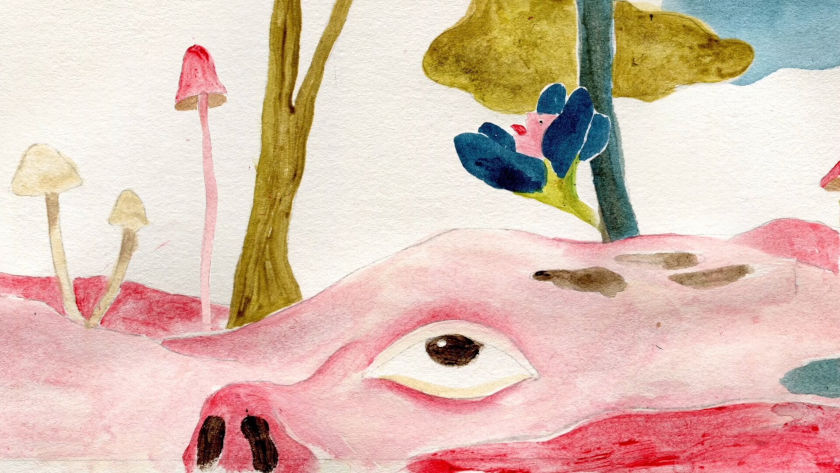Retain A Clear Ambition and Motivation: Interview with Koji Yamamura

Japanese animation filmmaker Koji Yamamura has already become a source of inspiration to independent animation students and professionals. Moving away from the commercial (and very successful and recognizable) anime sector, he went on to create his own, aesthetically pertinent and always interesting films. His distinctions include an 2003 Oscar nomination, as well as the Cristal D' Annecy for Mt. Head, and the Ottawa International Animation Festival Grand Prix for his Kafka story Franz Kafka: A Country Doctor [trailer].
He went on to work with National Film Board of Canada to re-create and enlighten one of the Holy Grails of early animation, Eadweard Muybridge, in his 2011 Muybridge's Strings.
He tackled Eric Satie and modernism in his 2016 short, Satie's Parade, and has also been instrumental in bringing (as a project supervisor) Vivaldi's 4 Seasons to the hands of an animated ensemble comprising Theodore Ushev, Atsushi Wada, Priit and Olga Pärn, & Anna Budanova (premiered in summer 2018).

Satie's Parade
We spoke with Koji Yamamura during the 11th edition of Fest Anča festival (28/6-1/7/18).
ZF: I’d like to start from your University duties. You students' films travel to many festivals. How does it feel like being at a University, being an educator?
KJ: I’ve been teaching at the Tokyo University of the Arts for ten years now. We have a two-year graduate program, and many students create their films, submitting to festivals, and I also contribute on behalf of the University. And many people want to come to learn animation as well. Among my own students, many really wish to create their own movies with a personal style. Of course, there are so many people who wish to create commercial anime. Those who wish to follow that direction go to a different University to study.
ZF: How do you compare the contemporary situation in animation education with the one you experienced when you started doing animation? You yourself didn’t have animation education.
KY: Difficult question. Of course, when I was a student, it was a completely different situation; my experience from that time is different, probably, than what young people experience today. When I started making animation, there was of course no Internet, so, you had to take a very active approach; there (was) only a handful of short films, so you had to really, actively look for information. Nowadays, if a student goes to University, and wants to study -ok, it’s a little bit humorous answer- but if you go there and see, you will get taught. But I feel many students either don’t have a clear goal in their career, or don't know what they want to do with animation. They approach animation like: “I would like to do animation because I like it. It’s fun”. But this is not a clear goal.
ZF: Did you have a clear goal in the beginning? What kind of films you watched, inspired you, and made you say “I want to do that and I have a clear goal”.
KY: I met and I like Yuri Norstein, Priit Pärn. Also, many Canadian animators, of course, Norman McLaren, Ishu Patel, US animator Caroline Leaf, and others. These are my signposts in short animation films, and these are my ideals.
ZF: You mentioned in your masterclass that time is continuous, and yet you kill in your films most of your characters.
KY: I never killed a hero on a story. In Mt. Head a man is really dead or not, and in Kafka the doctor is forever wandering on the ending. I think perhaps I have been influenced by body’s thinking and perception a little bit. I see a movie like a succession of frames. You have light, which shines on the frame, and then you have a pause. And the pause it’s like darkness, which is death. So, when you have 24 frames in a film, you get born and die 24 times in a row .
ZF: But the stories that you choose come from Western sources, where the conception of death is different. For instance, you have Franz Kafka, and European pessimism.
KY:: I see Kafka as being a very humorous auteur; he has a sense of black humor. There is also a connection between Kafka and Japanese Kyogen, a comedic art form of storytelling. Of course, I am influenced by Western and European authors, but I’m not putting such a heavy emphasis on countries; I think Kafka himself was also influenced by Chinese philosophy. I do think that artists are people who overcome cultural barriers and differences.
ZF: You have used in your films fish, crocodiles, horses. What’s your favorite animal?
KY: In my personal life, I like dogs most. But in my films, I draw fish a lot of times without being aware of it. So, you can say that fish is my most favourite animal. I also use the motive of horses a lot, but a horse is a little bit difficult to draw. But for some reason horses always appears in my drawings and films.
ZF: What about crocodile? Was it difficult to draw?
KY: No, no [laughing].
ZF: In The Old Crocodile, you do have feelings for the crocodile, even though he is the worst and must brutal crocodile of all. in most of of your films, your character is not very likable, but you sympathize with him/her. Is it deliberate?
KY: I think it’s 50-50%. So, 50% is not intentional and 50% is intentional. In my films, I draw characters, which are perhaps a little bit marginalized in the society, so you automatically feel for them. Maybe this comes from the influence from my own life; normal professionals, you know, like doctors or state workers, have different kinds of life than perhaps an artist has. So, there might be some kind of influence here. Every person, every human being has both dark sides and lighter sides to them, and it’s not very clear. I'm not interested in traditional storytelling, where a hero is completely good, and fights the dark side. My characters have a little bit of everything.
ZF: What was the happiest film you ever made?
KY: My three-part short film for children, the Karo and Piyobupt trilogy [A House, Imagination, The Sandwiches]. I think this is the happiest.
ZF: How did you feel when you made Muybridge’s Strings, a big co-production with the National Film Board of Canada? This was sort of a dark film as well.
KY: My personal feeling is of a sad film or atmosphere that comes from the passing of time. One moment of time passes, things change, and you get a little bit sad. But it was also influence by the Canadian style of film making and he co-operated a lot with Canadian musicians. I was very happy about their joint performance.
ZF: You manipulate effectively space in your films, and your camera angles many times go all the way to a 360 degree turn. Would you consider doing a film in VR/AR?
KY: I am a little bit interested in VR, and if (perhaps in the future) gets a little bit easier to use with your own hands, I might consider it. However, as a technology, I prefer working in a 2D space, and playing with the opportunities of that. In VR you work with 3D, you have X, Y and Z axes. That idea of space is different from what I have in mind for my animated films.
ZF: I was wondering if you had any experience of a film that was so challenging and difficult and you said “I cannot do that”.
KY: When I was in my 20s, I worked a little clay and puppet animation, and I feel that’s a technology that it’s little difficult to master for me. But I really tried; I neither work in 3D computer animation.
ZF: A student comes to you and tells you: Mr. Koji Yamamura, I want to make independent films, but I’m too young, frightened, and don’t have any money. I know I can make things, but the commercial world is so big, and I am so small. What’s your advice?
KY: When you are independent, there could be problems with funding - it’s not an easy task. But, on the other hand, short animation films can also be under your own control. And I think it’s best to find something that you really want to make, even if you don’t have money; If you can do that, then everything else would be falling into place. When you are working on a commercial sphere, you don’t have the freedom to work on what you would like to work for. Work on things that you really enjoy.
ZF: What matters more? Talent, ideas, work or all the above?
KY: Of course, I think talent is very important. However, I feel that, even though there are a lot of skills, new technologies, It’s difficult to get animation films that would be really interesting and deep. So, I would be very happy if people could retain a clear ambition and motivation to produce a deep work of art.
ZF: How do you think about animation festivals, and Fest Anča in particular?
KY: I personally prefer festivals which are smaller. In small-to-medium size festivals, you can get a good overview of guests, and their programmes are neatly packed, you can attend those better. In big festivals, you cannot really hope to see all of the staff available. So, I myself prefer smaller festivals.
The interview with Koji Yamamura was conducted during the 2018 edition of Fest Anča, 28/6-1/7/18. Zippy Frames wishes to thank organizers and Slovakian interpreter Anna Majerechova. Transcription by Ismini Karantzi.









